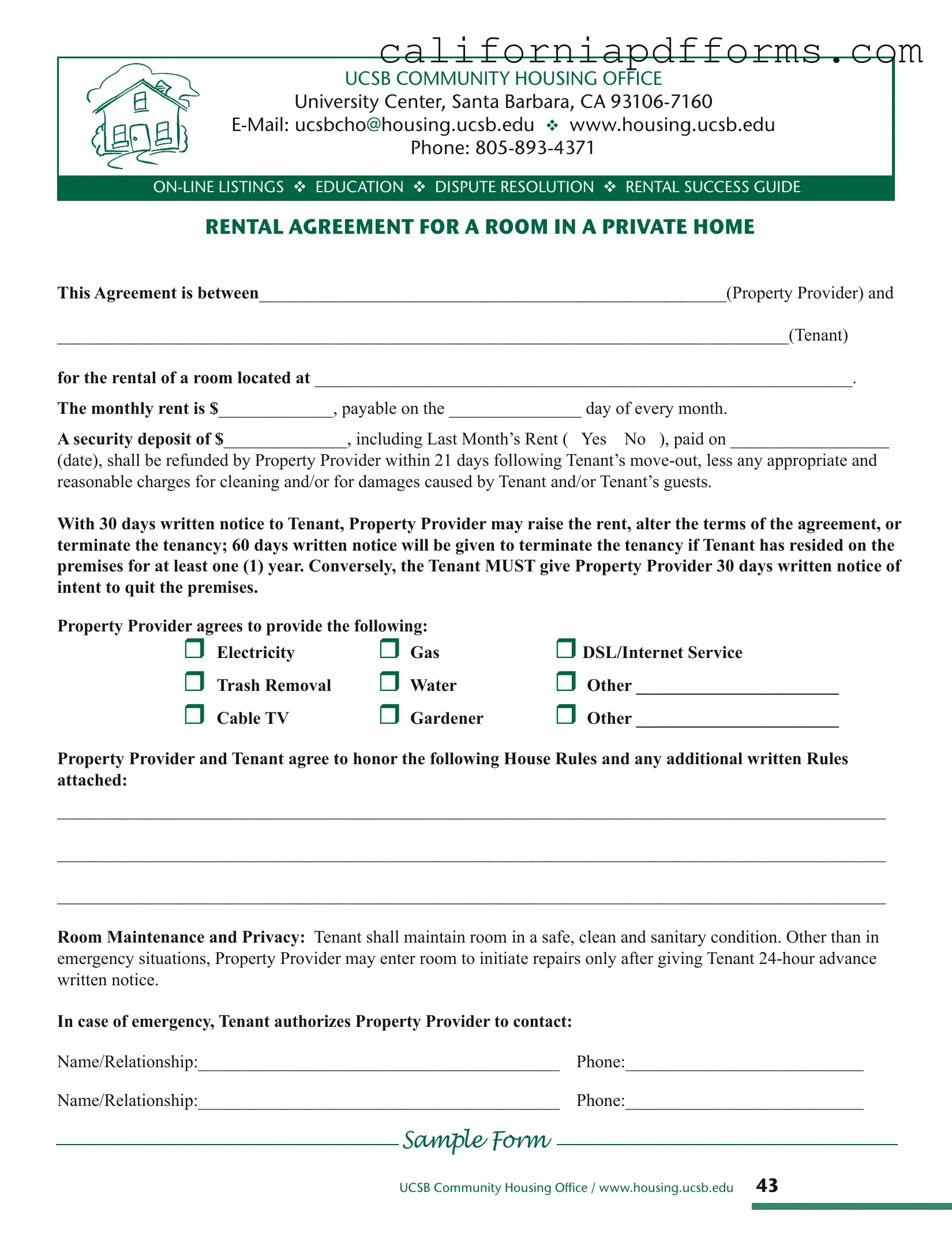The California Agreement Room form is a rental agreement designed for tenants renting a room in a private home. It outlines the terms of the rental arrangement between the property provider and the tenant. This form includes details such as the monthly rent, security deposit, house rules, and maintenance responsibilities, ensuring both parties understand their rights and obligations.
When completing the California Agreement Room form, you will need to provide specific information, including:
-
The names of the property provider and tenant.
-
The address of the rental room.
-
The monthly rent amount and the date it is due each month.
-
The security deposit amount, including whether it covers the last month's rent.
-
Any additional services provided by the property provider, such as utilities or maintenance.
-
Any house rules that will apply during the tenancy.
How is the security deposit handled?
The security deposit is an important aspect of the rental agreement. The property provider must refund the deposit within 21 days after the tenant moves out, minus any reasonable charges for cleaning or damages. It is essential for tenants to keep the room in good condition to ensure a full refund.
What are the notice requirements for terminating the tenancy?
Both the property provider and the tenant have specific notice requirements for terminating the tenancy. The property provider must give the tenant 30 days written notice if they wish to raise the rent or alter the terms of the agreement. If the tenant has lived in the property for at least one year, a 60-day notice is required for termination. Conversely, the tenant must provide the property provider with 30 days written notice if they intend to vacate the premises.
What happens if there is an emergency?
In case of an emergency, the property provider is authorized to enter the tenant's room without prior notice. However, for non-emergency repairs, the property provider must give the tenant 24 hours advance written notice before entering the room. This ensures that the tenant's privacy is respected while allowing necessary maintenance to occur.
What documents should tenants acknowledge receipt of?
Tenants should acknowledge receipt of several important documents when signing the agreement. These may include:
-
House Rules
-
Megan’s Law disclosure
-
Inventory & Condition Report
-
Furniture Inventory & Condition Report
-
Repair / Replacement Agreement
-
Lead Paint Disclosure
-
Maintenance Request Form
-
Inventory of Personal Property
These documents provide essential information regarding the rental arrangement and help protect both parties' interests.
